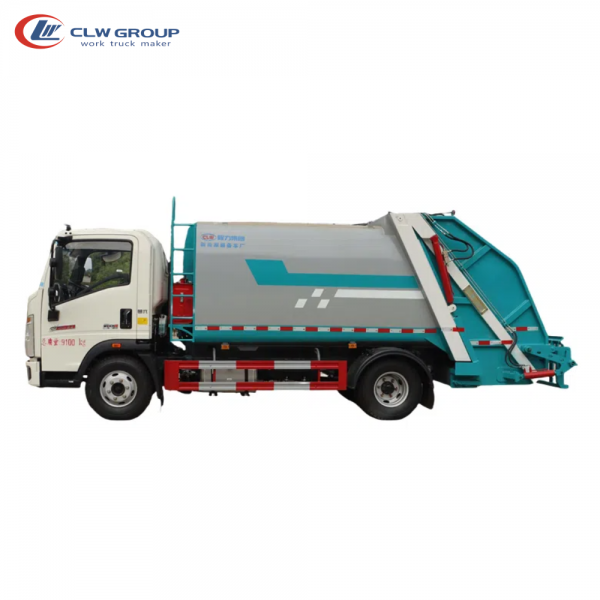Introduction
Truck mounted cranes have become an indispensable piece of equipment in various industries, including construction, mining, and logistics. These versatile machines provide the ability to lift and move heavy loads with precision and efficiency. However, managing and tracking these cranes can present challenges for fleet managers and operators. The integration of real-time tracking systems into truck mounted cranes has revolutionized the way these machines are operated and monitored. This article delves into the benefits and implications of utilizing real-time tracking systems in truck mounted cranes, highlighting the improvements in efficiency and safety that these technologies bring to the table.
Evolution of Truck Mounted Cranes
Truck mounted cranes have a long history, dating back to the early 20th century when the first mobile cranes were developed. These cranes were initially operated manually, requiring skilled operators to maneuver the equipment and lift loads. As technology advanced, hydraulic systems were integrated into truck mounted cranes, allowing for more precise and efficient operations. The introduction of telescopic booms and hydraulic extensions further enhanced the capabilities of these cranes, enabling them to reach greater heights and lift heavier loads.
Real-Time Tracking Systems: A Game Changer
Real-time tracking systems have emerged as a game changer in the operation of truck mounted cranes. These systems utilize GPS technology to monitor the location and status of the crane in real-time. By integrating tracking devices into the crane's control system, fleet managers and operators can access crucial data such as location, speed, and operating conditions at any given moment. This real-time information provides a wealth of benefits, including enhanced efficiency, improved safety, and streamlined operations.
Enhanced Efficiency
One of the key benefits of real-time tracking systems in truck mounted cranes is the enhanced efficiency they bring to the table. By monitoring the location and status of the crane in real-time, fleet managers can optimize route planning and scheduling, ensuring that the crane is deployed to the right location at the right time. This minimizes downtime and maximizes productivity, ultimately leading to cost savings for the company. Additionally, real-time tracking systems enable operators to monitor fuel consumption and engine performance, allowing for proactive maintenance and optimization of fuel efficiency.
Improved Safety
Safety is paramount in the operation of truck mounted cranes, given the risks associated with lifting heavy loads at height. Real-time tracking systems play a crucial role in enhancing safety by providing operators with real-time data on the crane's stability, load capacity, and operating conditions. By monitoring visit our website in real-time, operators can make informed decisions to ensure safe and efficient operation of the crane. In the event of an emergency or equipment malfunction, real-time tracking systems enable quick response and intervention, reducing the risk of accidents and injuries.
Streamlined Operations
Real-time tracking systems streamline operations by providing fleet managers with a comprehensive view of the crane's performance and utilization. By analyzing data such as operating hours, idle time, and maintenance schedules, managers can identify inefficiencies and optimize the crane's usage. This data-driven approach allows for better decision-making and resource allocation, leading to improved operational efficiency and profitability. Furthermore, real-time tracking systems enable remote monitoring and diagnostics, reducing the need for on-site inspections and manual intervention.
Case Studies and Success Stories

Several companies have successfully implemented real-time tracking systems in their truck mounted cranes, reaping the benefits of enhanced efficiency and safety. Case studies from industries such as construction, mining, and logistics demonstrate the positive impact of these technologies on operations. For example, a construction company reported a 20% increase in productivity after implementing real-time tracking systems in their crane fleet. Similarly, a mining company reduced maintenance costs by 15% and improved safety compliance by 30% through the use of real-time tracking systems.
Challenges and Considerations
While real-time tracking systems offer numerous benefits, there are challenges and considerations that need to be addressed when implementing these technologies in truck mounted cranes. One of the key challenges is data security and privacy, as tracking systems collect sensitive information that needs to be protected from unauthorized access. Additionally, the integration of tracking devices into existing crane systems may require technical expertise and training for operators. Furthermore, the cost of implementing real-time tracking systems can be a barrier for some companies, especially smaller businesses with limited budgets.
Future Trends and Innovations
The future of truck mounted cranes lies in the continued integration of advanced technologies such as artificial intelligence and Internet of Things (IoT) into real-time tracking systems. AI-powered predictive analytics can help optimize crane operations by forecasting maintenance needs and identifying potential issues before they occur. IoT-enabled sensors can provide real-time data on crane components and performance, enabling proactive maintenance and remote diagnostics. These innovations hold the potential to further enhance efficiency, safety, and sustainability in the operation of truck mounted cranes.
Conclusion
Real-time tracking systems have transformed the way truck mounted cranes are operated and monitored, bringing significant benefits in terms of efficiency, safety, and operational excellence. By harnessing the power of GPS technology and data analytics, companies can optimize crane operations, reduce costs, and improve safety compliance. While challenges exist in implementing these technologies, the long-term benefits far outweigh the initial investment. As the industry continues to evolve, the integration of advanced technologies will drive innovation and productivity in the operation of truck mounted cranes.
